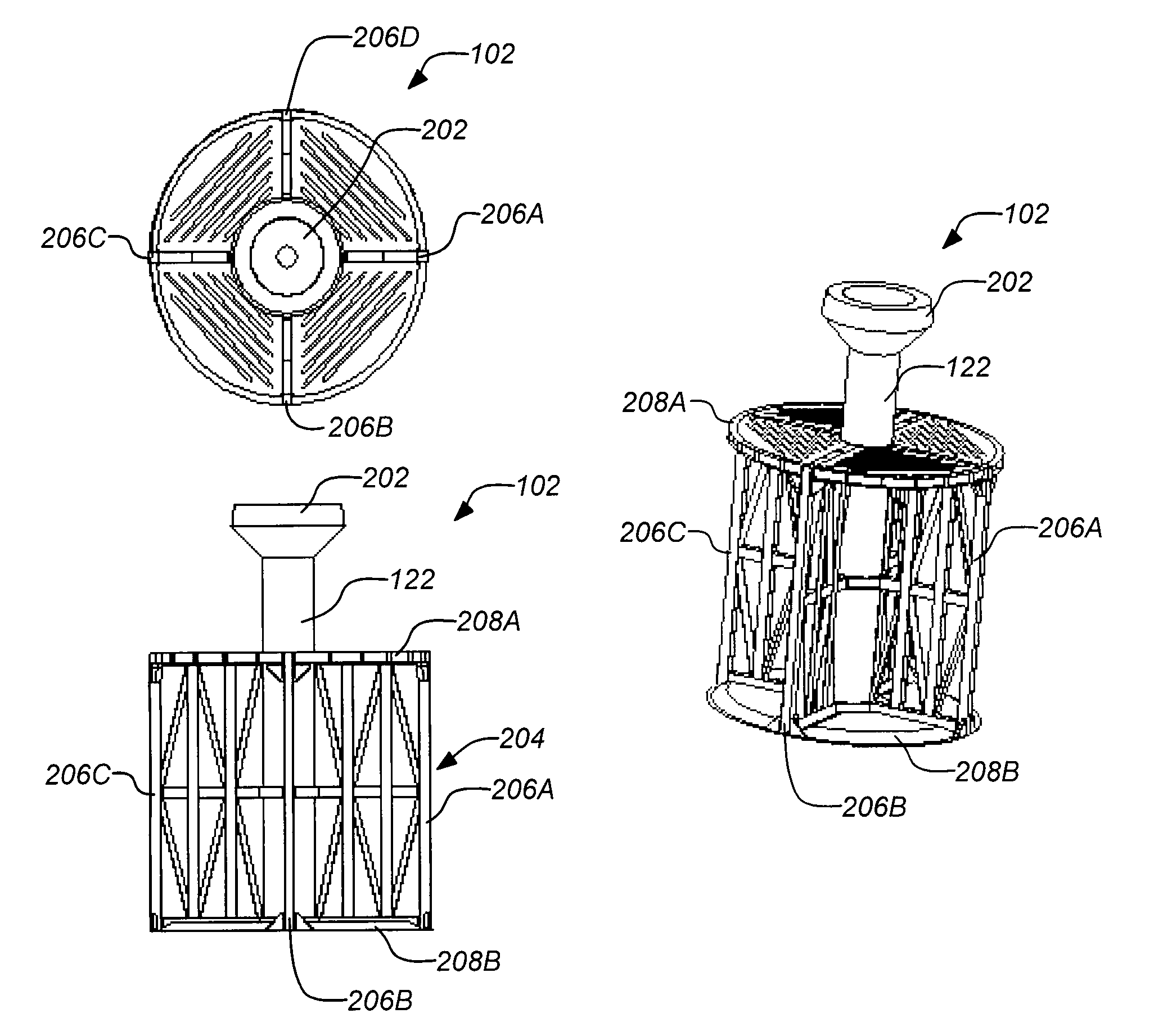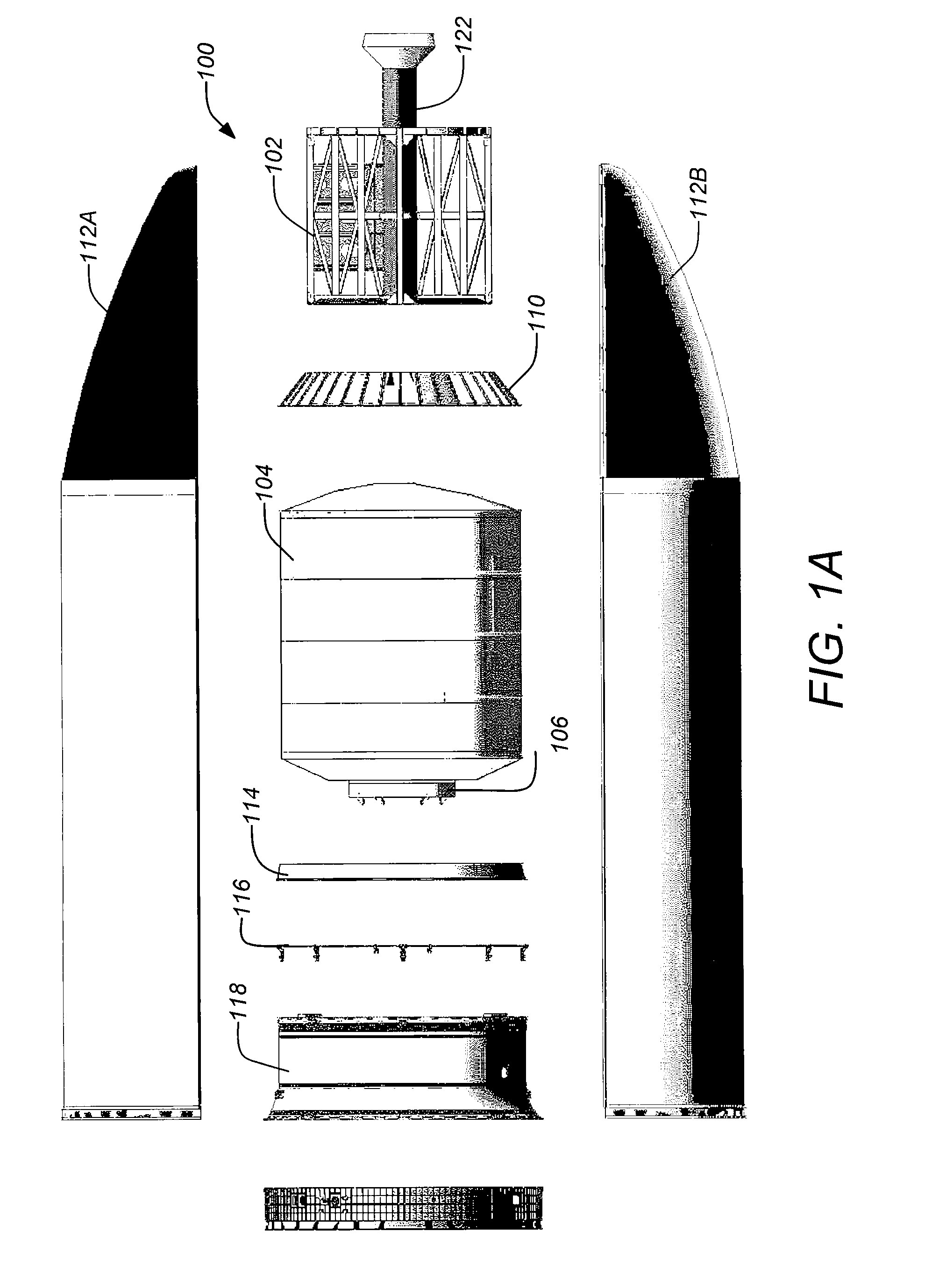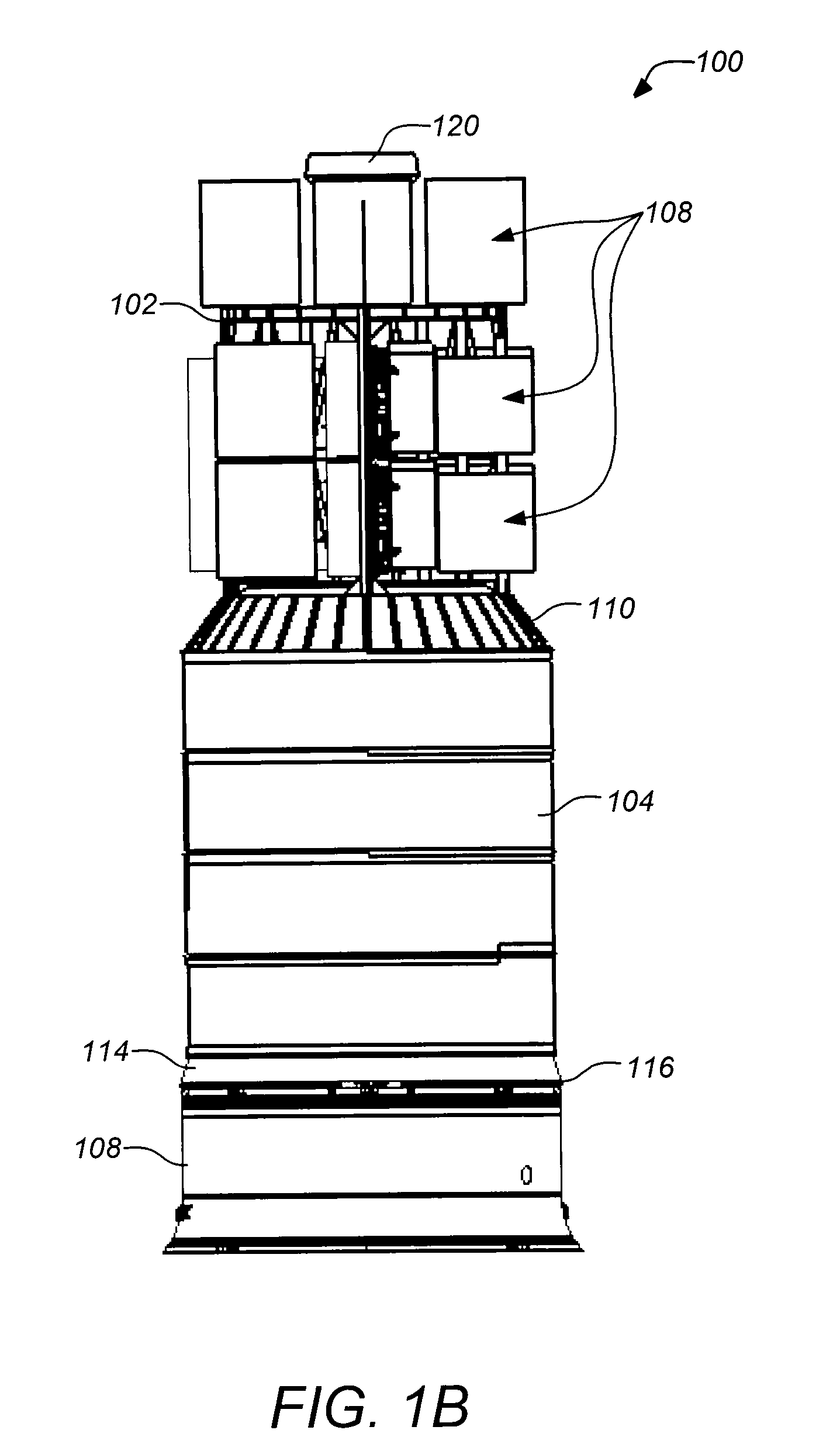Launch vehicle cargo carrier
a cargo carrier and launch vehicle technology, applied in the field of space applications, can solve the problems of reducing the service life of the space shuttle, so as to maximize the useable cargo upmass and the utility of the required launch components, and minimize additional costs
- Summary
- Abstract
- Description
- Claims
- Application Information
AI Technical Summary
Benefits of technology
Problems solved by technology
Method used
Image
Examples
Embodiment Construction
[0024]1. Overview
[0025]A cargo carrier embodiment of the present invention can be used to deliver all of the yearly ISS resupply cargo requirements in a single launch. The cargo carrier can be designed to be compatible with all ISS assembly outfitting and resupply cargo. Throughout the specification, the invention may be described as being launched on a Delta-IV rocket (a specific model of expendable launch vehicle), however, embodiments of the present invention are not limited to this particular launch vehicle; any suitable launch vehicle may be implemented with the invention.
[0026]A cargo carrier embodiment of the invention can utilize existing on-orbit assets to transfer ISS cargo from an insertion orbit to the ISS, resulting in much greater usable cargo upmass than any competing solution. By utilizing existing on-orbit assets to transfer the cargo from insertion orbit to the ISS, there is no need to qualify new hardware to meet ISS visiting vehicle requirements, resulting in a s...
PUM
 Login to View More
Login to View More Abstract
Description
Claims
Application Information
 Login to View More
Login to View More - R&D
- Intellectual Property
- Life Sciences
- Materials
- Tech Scout
- Unparalleled Data Quality
- Higher Quality Content
- 60% Fewer Hallucinations
Browse by: Latest US Patents, China's latest patents, Technical Efficacy Thesaurus, Application Domain, Technology Topic, Popular Technical Reports.
© 2025 PatSnap. All rights reserved.Legal|Privacy policy|Modern Slavery Act Transparency Statement|Sitemap|About US| Contact US: help@patsnap.com



